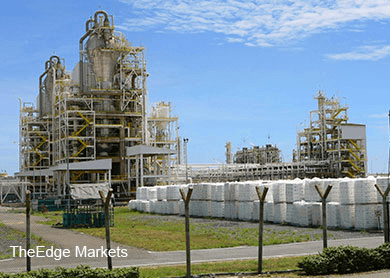
Oil and gas sector
Maintain overweight: Various events like the Greek crisis and the devaluation of the yuan dampened the prospect of a sooner-than-expected recovery, with uncertainties from the much-awaited US Federal Reserve interest rate hike that could either quicken or delay the upward push on crude oil prices.
The Organization of the Petroleum Exporting Countries’ (Opec) monthly oil report predicted higher crude oil demand of 30.3 million barrels per day next year, supporting the view that the pressure on declining oil prices would control the US shale boom and cut global surpluses.
China and Latin America have been said to contribute to slower growth next year on weaker economic outlooks. The US Energy Information Administration also published data showing a slowdown in US oil production to 9.13 million barrels per day, which is significant and accelerating, equivalent to entire outputs of countries such as Ecuador and Libya’s current production levels.
To recap, we touched on our view of the W-shaped course in March — the crash, recover, crash, recover trend, whereby we are at the bottom part of the “W”. This drop could be longer than expected, considering a chain of events snowballing to this point but will eventually rebound on the back of expectations such as the International Energy Agency’s view that non-Opec production will fall by 500,000 barrels per day in 2016.
We retain our “overweight” view on the sector, premised on our view that oil price stability seems to be in sight, assuming that supply overhang issues will eventually be erased with rising global demand and shrinking US output estimates.
The Iraqi government has warned oil companies about expected lower reimbursement levels due to a fall in oil sales revenue, which would reduce funds available to the oil ministry, on the back of Iraq increasing production of more than four million barrels per day.
Issues of oil companies unable to operate in Iraq securely and dependant on consistent payments from the government could hinder the country’s long-term ability to continue increasing its oil output.
The domestic oil and gas market is stimulated by Petroliam Nasional Bhd, in anticipation of more contracts, delayed since the second half of financial year 2014. Contract types include engineering, procurement, construction, installation and commissioning, fabrication, maintenance services and various jobs for the refinery and petrochemical integrated development.
US dollar appreciation in recent days has made commodities more expensive for other currency holders, placing further stress on an oil price rebound. In the United States, indebted companies are increasing as traditional lending and equity markets are less willing to fund marginal companies. So, these companies are turning to private equity investors who are also on the lookout for them, but most often at steeper interest rates and demanding terms for the operators.
Devaluation of the yuan shook the world, even as Chinese stock exchanges fell, reinforcing concerns about China’s economic health. Some red flags have been raised with high levels of provincial debt, an inflated stock market and environmental pollution that could force the Chinese government to loosen its reins on two decades of phenomenal growth. China’s fragile condition, coupled with evidence of a growing crude glut build-up, could serve as a dampener on oil prices. Countries that depend heavily on exports to China also saw their currencies sliding.
Japan recorded a 1.6% annualised contraction in gross domestic product in the first half of 2015, on the back of weak domestic consumer spending and slowing exports. Its weak numbers contributed to the recent sell-off as well.
The Indonesian government approved plans to invest US$3.7 billion (RM15.69 billion) to develop 18 oil and gas fields to offset declining production and to boost government revenue. Indonesia wants to secure supply contracts with Opec members, following its plans to ramp up its refining capacity. The country has been lobbying for this and has also been confirmed to be rejoining the Opec as a full member in December, with an aim of producing 825,000 barrels per day this year, although it could miss this target as only 812,000 barrels per day are expected to be produced.
Uzma Bhd will be buoyed by full-year contributions from MMSVS Group Holdings Co Ltd and Premier Enterprise Corp (M) Sdn Bhd, a stake increase in Setegap Ventures Petroleum Sdn Bhd to 49%, awards for Sazma Aviation Sdn Bhd and a D-18 Water injection facility for Petronas Carigali Sdn Bhd (PCSB).
Petra Energy Bhd saw an early activation of a topside major maintenance services contract by PCSB for its Sabah operation effective since July 4, 2014, and will last until May 20, 2018, as well as higher work orders under the Pan Malaysia contract. Its KBM cluster RSC have produced four million barrels of oil to date. The group has also taken measures to manage costs and operation expenditures, while exploring new opportunities to attain new revenue streams. — PublicInvest Research, Sept 17

This article first appeared in digitaledge Daily, on September 18, 2015.